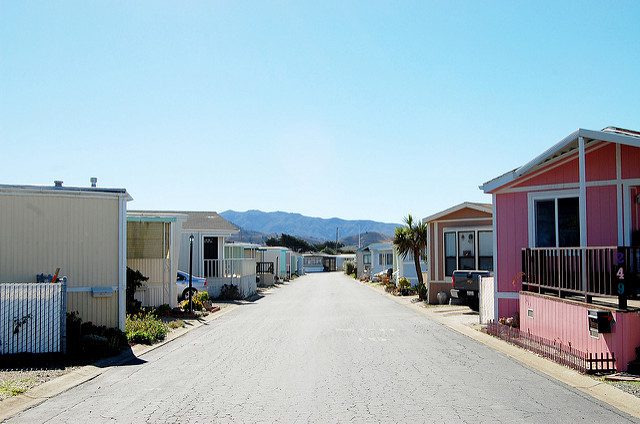
Photo by Todd Lappin via flickr, CC BY-NC 2.0
Shared-equity homeownership programs just had a big win: Fannie Mae and Freddie Mac (“the Enterprises”) committed in their Underserved Markets Plans to increase access to mortgages for shared-equity homebuyers over the next three years.
These Underserved Markets Plans (UMPs) were approved at the end of 2017, and are a part of the implementation of the Federal Housing Finance Agency’s (FHFA) Duty to Serve program. The intent behind the new program is to bring liquidity to underserved markets and increase access to financing. This is precisely the issue that many shared-equity homeownership programs have faced, especially in the midst and aftermath of the foreclosure crisis: their mortgage-ready buyers have been unable to obtain financing for home purchase.
The barriers to mortgage financing for homebuyers in community land trusts and below-market-rate housing programs has—in large part—been explained by the lack of lender confidence that they could sell these loans on the secondary market, coupled with the greater administrative burden of underwriting these relatively small loans. In the multifamily space, resident-owned communities (ROCs)—in which residents cooperatively own the land on which their manufactured, or “mobile,” homes sit—have faced their own challenges to accessing financing.
When the Enterprises successfully enact their UMPs, many of these barriers will be addressed, making lending to shared-equity borrowers and ROCs a more normalized activity in the housing finance market.
Background
As mandated by the 2008 Housing and Economic Recovery Act, FHFA issued a final rule at the end of 2016 to implement the Duty to Serve program. Congress intended for the Enterprises to go beyond their affordable housing goals for purchasing mortgage loans in order to “provide leadership” to specific underserved markets through the development of innovative loan products, outreach to market participants, the volume of loans purchased, and the amount of investments.
The program requires that the Enterprises serve three underserved markets—manufactured housing, affordable housing preservation, and rural housing—by increasing the liquidity of mortgage financing for very low-, low-, and moderate-income families. Since shared-equity homeownership models are important for creating and sustaining homeownership opportunities with lasting affordability, Grounded Solutions Network worked with FHFA and national partners to ensure these models were included in the final rule as a part of “affordable housing preservation.”
Each Enterprise is required to adopt a three-year Underserved Markets Plan to fulfill the program’s requirements, and they have some discretion over which activities they pursue to serve each underserved market. Ultimately, both Fannie and Freddie opted to include shared-equity homeownership in their plans, which means that over the next three years, Fannie Mae and Freddie Mac will be working to increase access to mortgages for homebuyers of shared equity homes.
Fannie Mae’s Plan for Shared Equity Programs
In the next three years, Fannie Mae will:
- Purchase between 1,100 and 1,300 loans made to shared-equity borrowers.
- Support research to understand the market, which in turn will benefit the field by increasing the understanding about the prevalence of shared-equity and inclusionary housing.
- Simplify requirements and increase borrower or property eligibility.
- Conduct outreach to lenders to improve confidence and compliance.
- Increase liquidity for manufactured housing titled as real property by potential product variances for loans with resale restrictions.
- Design a pilot program for Resident Owned Communities (ROCs) that can test potential guideline changes aimed at increasing loan purchases (2018).
- Purchase 12 loans for ROCs (2019 and 2020).
- Establish an investment pilot program for nonprofits or governments that focus on manufactured housing communities, which may support housing with lasting affordability.
Freddie Mac’s Plan for Shared Equity Programs
In the next three years, Freddie Mac will:
- Purchase shared equity loan portfolio(s) in 2018 to learn from their performance.
- Support a white paper on the exploration of a Shared Appreciation Loan Fund designed specifically to expand homes with lasting affordability.
- Incorporate shared-equity homeownership models into guidelines and reorganize guidelines to be more user-friendly.
- Identify incentives to promote lender engagement with shared equity programs, reduce administrative burden, and increase secondary market activity.
- Pilot or institute product flexibilities and standardization through uniform legal documents and guidelines to broaden those served.
- Support the adoption and development of a web-based application to help lenders and Freddie Mac evaluate program and transaction eligibility and to streamline and standardize practices.
- Automate some underwriting for shared equity loans (2020).
- Educate and train lenders and shared equity programs on products and underwriting variances.
- Conduct extensive research on the ROC market.
- Develop of a pilot for ROCs and complete a sample transaction to inform underwriting parameters and policy guidelines (2018 and 2019).
- Complete up to two transactions on ROCs (2020).
The Enterprises are pursuing additional activities that will support inclusionary housing programs, the preservation and lasting affordability of rental properties, and economic integration.
Since the Enterprises are competitors, it is unsurprising that their plans for product development or variances are not spelled out in the UMPs. However, we provided both with concrete recommendations and priorities for improvements to their selling guidelines, and are very hopeful that substantive changes will be pursued so shared equity programs across the country will have increased lending opportunities for their borrowers within the next one to three years.





Great news and progress. Many thanks to Emily and to Grounded Solutions for your excellent and sustained work on getting us here.
Thank you, Grounded Solutions! Waterville Community Land Trust salutes your great work!
It will be interesting to see the outcomes of the chattel mortgage study being conducted by Fannie Mae in New Hampshire. Any increase in liquidity options for ROC members to finance and refinance properties with standardized, low-rate and long-term mortgage options would tend to lower monthly housing costs, improving affordability. Greater standardization may bring new investors into the space, improving the chances for adding new affordable communities in places where housing costs are beyond the reach of far too many people.